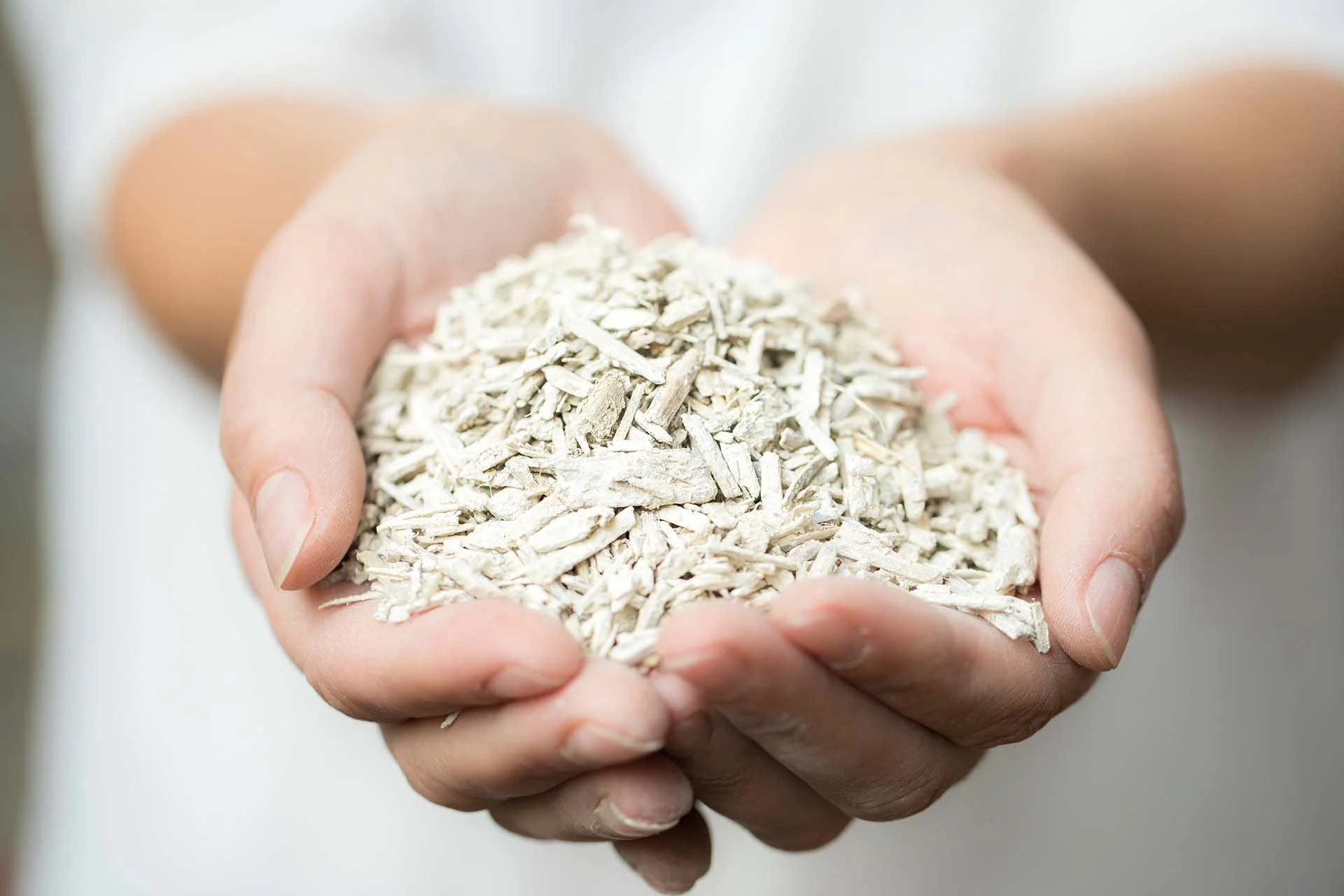Have you ever thought a simple plant—related to cannabis—could replace a big chunk of the world’s most polluting building material? While “hemp” might conjure images of hemp T-shirts or alternative lifestyles, it might soon appear in your floor, walls, or even roads. Researchers say hemp-based concrete (or hempcrete) is a natural, carbon-locking solution that could seriously clean up the building sector.
Why is Concrete a Problem?
Concrete sits just behind water as the world’s most used substance, clocking in at around 30 billion tons a year. Big highways, huge office towers, modest homes—most of them lean on concrete. Yet making it devours enough energy to rival entire countries in emissions. The core villain is cement, which is “cooked” from limestone at about 1,500 degrees Celsius, pumping out huge amounts of carbon dioxide. Experts have pegged cement manufacturing as the source of about 8% of all carbon emissions. That’s more than most countries, behind only China and the United States, if we treat cement as a country.

In a warming world, we want better: less pollution, less water usage, smaller land impact, and more robust local economies. That’s where hemp might shine.
Meet Hempcrete
Hempcrete is a simpler name for a mixture of hemp “hurds” (the woody inner bits of the hemp stalk), lime powder, and water. The result is a material that’s both sturdy and flexible enough for insulation, yet definitely not a load-bearing champion like rebar-filled concrete. People typically cast hempcrete into walls, floors, or roofs around a structural frame of wood or steel.

What’s so special about it?
- Carbon Storage: While hemp grows, it gobbles up carbon from the air. Then, once it’s part of hempcrete, it continues locking in carbon. Lime also re-absorbs CO₂ in a process called carbonation. That helps offset the carbon output from other parts of the building process.
- Insulation and Moisture Control: Hempcrete breathes. No, not in the sense of lungs, but it deals well with humidity, letting water vapor exit and enter. That means fewer mold or damp problems and more stable indoor comfort.
- Long Life, Low Maintenance: Studies claim hempcrete can last over 100 years if well protected. It’s also fire-resistant, deterring pests and fungus because hemp-lime mixes tend to have a higher pH that bugs don’t love.
- Energy Savings: That breathable, insulating structure can slash heating and cooling bills. According to Building and Environment, hemp-lime walls can reduce reliance on air conditioning and keep things comfy year-round.
There is a minor catch: hempcrete is quite porous. You can’t pile it four stories high to hold up an apartment building. So it’s commonly used for infill walls or insulation rather than structural foundations. Some hemp-block variants are available, but they still require an extra skeleton for big loads.
The Big Concrete Elephant
How does hemp even stand a chance next to mainstream concrete? Well, a few reasons:
- Climate Targets: Countries are scrambling to reduce greenhouse gases. Building and construction alone contribute around 39% of energy-related carbon emissions globally. If hempcrete can drop that by even a fraction, it’s a big step.
- Versatility: Hemp can transform into boards, insulation mats, or be cast into shapes. A house in Australia uses hemp-lime blocks. A sports center in France showcases hemp-lime walls. A 12-story hotel in South Africa used hempcrete. Meanwhile, in the United States, companies like Hempitecture churn out non-toxic hemp insulation.
- Local Farming: Hemp can be grown in many regions, from Europe to North America. This gives rural areas a new cash crop while lowering transport costs for building material.
How to Make Hempcrete
Maybe you’re not about to whip up a wheelbarrow full of the stuff in your backyard—but it’s still fun to see how this eco-friendly building material goes from field to form. Here’s the four-step rundown:
1. Pick Your Hemp
Start by grabbing industrial hemp that won’t get you in trouble—look for varieties with very low THC (under 0.3%). You need the sturdy core, not the party parts.
2. Prep the Woody Stuff
The hemp stalks go through a machine called a decorticator (or a hammer mill, if you’re old-school). This separates the hurds—basically the woody center—from the rest of the plant.
3. Stir In the Lime
Toss those hurds in with a lime binder and a splash of water. Many folks like to add extras, such as ground granulated blast furnace slag (GGBS) or metakaolin, for a little extra oomph in strength.
4. Let It Rest
Pour that mix into forms or shape it into blocks. Then, like a well-deserved nap, hempcrete needs some downtime (often a few weeks) to cure. Some factories streamline the process by pre-making blocks, so you can simply stack them up and say hello to a greener, cozier home.
It’s relatively low-tech, though controlling compaction is tricky. Too little compression gives you weak material; too much crushes the air pockets that help with insulation. The sweet spot is crucial.
Global Examples
- Adnams Warehousing and Distribution Centre (UK): A large warehouse that used lime/hemp blocks for the walls. This set the local record for the largest hemp-lime building in Britain, rated “excellent” on the BREEAM sustainability scale.
- Bright Building at University of Bradford (UK): Known as the highest-rated educational building by BREEAM. Its walls use thick monolithic hemp-lime, storing more than 50 tons of CO₂.
- Greencore Homes (Oxfordshire, UK): A developer building hemp-lime houses that surpass even high standards like Passivhaus. Great insulation, low carbon footprints. The big stumbling block: cost and scale.
Can Hemp Fix Our Roads, Too?
Surprising as it sounds, hemp fiber might soon appear in highways. If you mix hemp fiber into asphalt, it can potentially reduce rutting and cracks, especially in thinner or “greener” asphalt designs like cold mix or stone mastic asphalt (SMA). People have tried bamboo or coir fiber in roads with decent results. Hemp might do the same. Some labs show that hemp fibers reduce binder drain-off, add tensile strength, and help the asphalt last longer. Early findings are hopeful:
- Hemp Fiber in Cold Mix: A team used around 0.35% hemp fiber to fortify cold mix asphalt. The result? Better rutting resistance and water tolerance, which might reduce pothole formation.
- SMA and Porous Pavement: Another test suggested hemp fibers help with drainage issues and reduce cracking, though we need real field tests to confirm it can handle repeated truck loads and freeze-thaw cycles.
Environmental Spin
Carbon Sink: Hemp is known to sequester up to twice as much carbon as a typical forest, given similar land area and time. Farmers can rotate hemp with other crops. The synergy is that while farmers cultivate hemp for seeds or fiber, the leftover “hurds” go into hempcrete. Some studies show a single square meter of hemp-lime wall can lock away 80–100 kg of CO₂ net. That’s massive, considering typical cement manufacturing is one ton of CO₂ for every ton of cement.

Less Water, Less Pesticide: Industrial hemp can flourish with fewer pesticides and moderate water (though not zero). This lowers the overall eco-footprint compared to, say, cotton.
Can It Break Even on Cost?: That’s the million-dollar question. Right now, hemp farming is smaller scale, plus regulations can be a big barrier. Coupled with untested building codes, hemp-lime can cost more than standard cinder blocks. But scale often slashes costs. If governments encourage it with carbon taxes or green building incentives, hemp might get cheaper and more widespread.
Potential Barriers
- Insurance Woes: Some carriers see hemp walls as “unusual.” This can lead to higher premiums. Over time, data from real projects might calm their nerves.
- Structural Limits: Hempcrete alone can’t hold up multi-story towers. So it’s used for insulation or with structural frames. That’s not always a big deal, but it’s a design shift.
- Consumer Comfort: Some folks still associate “hemp” with marijuana. Education is key to show industrial hemp has virtually no THC.
- Moisture & Freeze-Thaw: Hemp-lime is great at moderate climates. Very cold or extremely humid zones might need extra care in design.
- Scaling Supply: We need consistent hemp harvests. That means bigger farmland, specialized equipment, and stable markets. If supply falters, the cost remains high.
So, Should You Care?
If you’re building a home soon or simply craving a big remodel, hemp-based walls or hemp insulation might be the eco-savvy bet. The vibe is an airy, comfortable interior—plus that warm, fuzzy feeling of cutting greenhouse emissions. For road enthusiasts, the idea of hemp fiber in asphalt might be a future step. Maybe you’ll soon drive on a hemp road. That’s next-level “green lane” territory, right?
And for readers in policy, finance, or local government, hemp projects could spark local jobs. Farmers benefit from an extra crop; processors and building teams gain new lines of work. Meanwhile, the final buildings use less energy, saving owners money over time. That’s a decent trifecta: local growth, carbon cuts, lower bills.
A Future Grows in Hemp
Though hemp-lime building still faces obstacles—cost, scale, regulation—everyone from big environmental groups to small start-ups sense a shift. As building codes evolve and the fight against rising emissions intensifies, hemp might get mainstream acceptance. Universities are studying better binders to slash carbon footprints further. Some folks see magnesium cements or new chemical combos that make hemp-lime stronger and faster to cure. Meanwhile, labs test hemp in asphalt and vow to solve moisture or durability unknowns.

Ultimately, a building revolution might not revolve around shiny tech but around a tall, fast-growing plant older than the Great Wall of China. That’s hemp’s beauty: harnessing a bit of ancient wisdom in a modern world that thirsts for climate solutions. So next time you see a field of hemp, don’t just think of clothing or hemp milk—imagine future walls, floors, or highways that are locking in carbon, saving water, and putting a real dent in our carbon-laden future.
The Action Steps
- Builders & Architects: Investigate local hemp-lime suppliers. Offer hemp-based materials as an upgrade or pilot in a small project.
- Homeowners: Look for hemp insulation or blocks. Ask your contractor about it. You might be that “early bird” who ends up with a carbon-friendly home.
- Policy Folks: Streamline hemp permits. Consider tax incentives or carbon credits for greener building materials. Tweak building codes to accept hemp-lime.
- Investors & Start-ups: Explore hemp supply chain or specialized hempcrete production. If large-scale adoption rises, early players gain big.
Wrapping Up
Modern civilization was built on concrete, but we can’t ignore the harm that cement production does to the planet. Enter hemp, a plant with a past as old as sailboats in ancient China. Hemp-lime blocks could power a new wave of carbon-friendly buildings, bridging local farmland and cutting-edge architecture. Sure, there are kinks—cost, codes, consistent supply—but the momentum is real.
It’s a strong hint that the future of building may rest on the slender stalks of a hemp plant. If that brightens your day or just piques your interest, then we’re one step closer to seeing greener cities take root—hemp-lime style.




